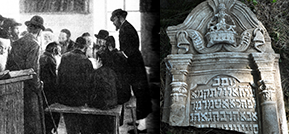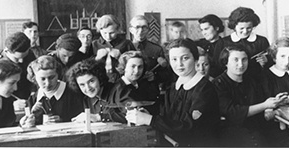Baranów
Name in English:
Baranuv
Name in Ukrainian:
Баранув-Сандомирський
Name in Polish:
Baranów Sandomierski
Name in Russian:
Баранув-Сандомерский
Name in Hebrew:
באראנוב
Historical-cultural region:
Western Galicia
Administrative District :
Subcarpathian Voivodeship
Population Data:
|
Year |
General Population |
Jews |
|
1765 |
(?) |
300 |
|
1848 |
(?) |
1021 |
|
1880 |
2002 |
1155 |
|
1890 |
2371 |
1491 |
|
1900 |
1817 |
918 |
|
1910 |
1764 |
894 |
|
1921 |
1794 |
745 |
Items relevant to the community
| Title | Type of item | Years |
|---|---|---|
| Baranów | Communities | |
| Ernennung von Bezirks- und GemeinderabbinernОб ... | CAHJP Cards | 1854 |
| Korespondencja w sprawie obsadzenia wolnej posa... | CAHJP Cards | 1895 |
| Korespondencja w sprawie rekursów i zażaleń czł... | CAHJP Cards | 1901 |
| Korespondencja z Starostwem w Tarnobrzegu w spr... | CAHJP Cards | 1910 |
| Korespondencja z Starostwem w Tarnobrzegu, doty... | CAHJP Cards | 1911 |
| Korespondencja ze starostwami w sprawach gmin w... | CAHJP Cards | 1897 |
| Korespondencja ze starostwami w sprawach gmin w... | CAHJP Cards | 1897 |
| Korespondencja ze starostwami w sprawach wyboro... | CAHJP Cards | 1898 |
| Korespondencja, dotycząca dostarczeń przelimina... | CAHJP Cards | 1901 |






